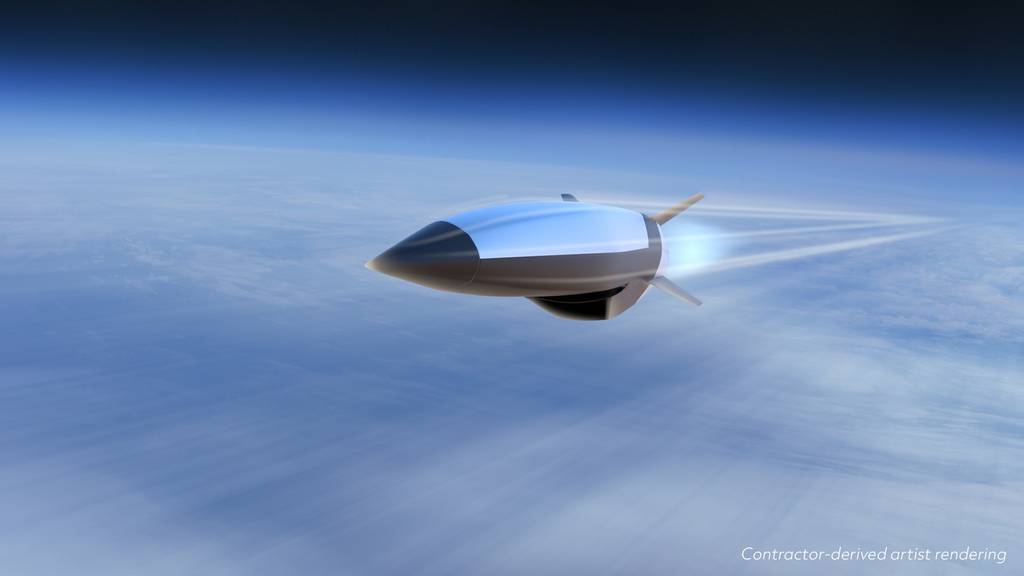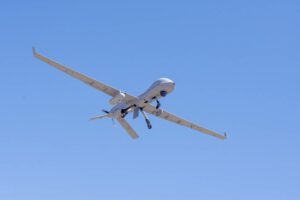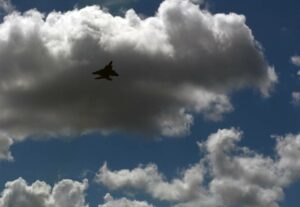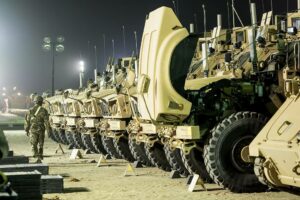
WASHINGTON — Northrop Grumman opened the doors to a new hypersonics manufacturing facility, designed to meet U.S. Department of Defense needs for high-speed propulsion systems.
The company broke ground on its Hypersonics Capability Center in 2021 and announced the opening of the Elkton, Maryland, facility Aug. 3. Chris Haynes, senior director for strategy and business development within Northrop’s missile portfolio, said the 60,000 square foot space will help the company and the department transition hypersonic systems from the development phase to production.
“We’ve got to be able to deliver an affordable weapon, we’ve got to deliver a reliable weapon and we have to do that at scale,” Haynes told reporters during briefing.
Initial activity at the new center, which Northrop calls the HCC, will focus on developing the engine for the Air Force’s Hypersonic Attack Cruise Missile. The company is teamed with Raytheon, an RTX company, on the program and is providing the weapon’s scramjet propulsion system.
Hypersonic vehicles can fly and maneuver at speeds above Mach 5, or more than 3,836 miles per hour. Scramjet engines capture and compress air at supersonic speeds, above Mach 1. That air combined with fuel provides thrust to the vehicle, allowing it to fly longer distances more efficiently than other propulsion systems.
Because these air-breathing engines aren’t fielded widely, they don’t have the “backbone or the foundation” that other propulsion systems have, Haynes said. Northrop envisions its HCC as providing a “first-of-its-kind” capability.
“Air-breathing systems are not fielded in scale today,” he said. “They offer a unique design architecture that doesn’t have the backbone or the foundation that the solid propulsion defense industrial base has to leverage.”
That said, Haynes noted, Northrop develops a range of propulsion systems and expects HCC will support manufacturing of engine types beyond just scramjet.
Asked how many engines the company can produce at the facility, Haynes said it’s still an open question. The company is still refining its design techniques for air-breathing systems and those approaches will dictate its production rate. The company also doesn’t have a clear signal from DoD regarding how many of the weapons it will eventually need.
He noted that HCC was designed to be modular, allowing for flexibility in the number and type of systems that it produces.
“We’re designed well to be able to support the needs for the near-term systems that we see,” Haynes said. “But we’ve got room to grow, and we did that by design and with intention.”
Courtney Albon is C4ISRNET’s space and emerging technology reporter. She has covered the U.S. military since 2012, with a focus on the Air Force and Space Force. She has reported on some of the Defense Department’s most significant acquisition, budget and policy challenges.
- SEO Powered Content & PR Distribution. Get Amplified Today.
- PlatoData.Network Vertical Generative Ai. Empower Yourself. Access Here.
- PlatoAiStream. Web3 Intelligence. Knowledge Amplified. Access Here.
- PlatoESG. Automotive / EVs, Carbon, CleanTech, Energy, Environment, Solar, Waste Management. Access Here.
- BlockOffsets. Modernizing Environmental Offset Ownership. Access Here.
- Source: https://www.defensenews.com/battlefield-tech/2023/08/04/northrop-opens-hypersonic-propulsion-manufacturing-facility/
- :has
- :is
- :not
- 000
- 1
- 10
- 2012
- 2021
- 60
- 70
- a
- Able
- above
- acquisition
- activity
- affordable
- AIR
- Air Force
- Allowing
- also
- an
- and
- announced
- approaches
- architecture
- ARE
- AS
- At
- attack
- Aug
- Backbone
- base
- BE
- Beyond
- Briefing
- budget
- business
- business development
- by
- Calls
- CAN
- capability
- capture
- Center
- challenges
- Chris
- clear
- combined
- company
- covered
- cruise
- Defense
- deliver
- Department
- department of defense
- Design
- designed
- developing
- Development
- develops
- DID
- Director
- do
- DoD
- Doesn’t
- Dont
- doors
- during
- efficiently
- emerging
- Emerging Technology
- Engine
- Engines
- envisions
- eventually
- expects
- Facility
- Flexibility
- Focus
- Foot
- For
- Force
- Foundation
- from
- Fuel
- Ground
- Grow
- Have
- he
- help
- hour
- How
- HTTPS
- images
- in
- industrial
- Intention
- IT
- ITS
- jpg
- just
- Leverage
- longer
- manufacturing
- many
- Maryland
- Meet
- Military
- modular
- more
- most
- Need
- needs
- New
- noted
- number
- of
- offer
- on
- open
- opened
- opening
- opens
- or
- Other
- per
- phase
- plato
- Plato Data Intelligence
- PlatoData
- policy
- portfolio
- produce
- produces
- Production
- Program
- propulsion
- provides
- providing
- question
- range
- Rate
- refining
- regarding
- reliable
- Reported
- reporter
- Room
- rtx
- s
- Said
- Scale
- see
- senior
- she
- Signal
- significant
- since
- solid
- some
- Space
- Space Force
- speeds
- square
- Still
- Strategy
- supersonic
- support
- system
- Systems
- teamed
- techniques
- Technology
- than
- that
- The
- These
- they
- those
- thrust
- to
- today
- type
- types
- u.s.
- U.S. Department of Defense
- unique
- vehicle
- Vehicles
- was
- we
- Weapons
- WELL
- which
- widely
- will
- with
- within
- zephyrnet












